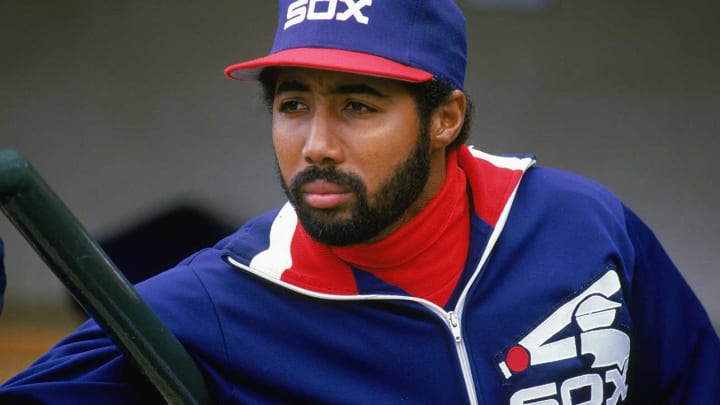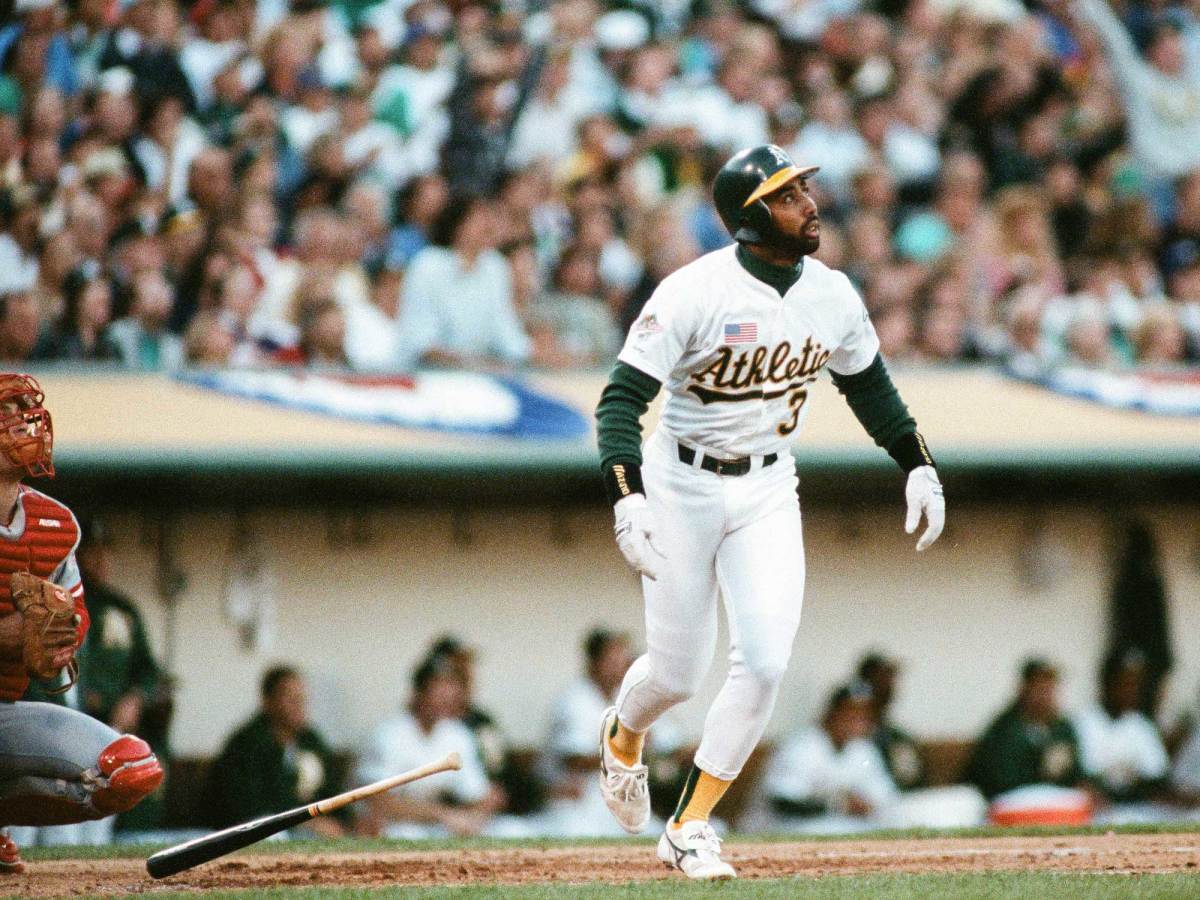Harold Baines's Stunning Hall of Fame Election Is an Embarrassment

LAS VEGAS — Back in November, when the Baseball Hall of Fame announced the candidates up for election this year as part of its redesigned Veterans Committee, I predicted that none of them would get a plaque in Cooperstown next July. That wasn’t exactly a bold call: None of the former players drew much support from BBWAA voters on their first go-round, nor did they or the managers and front office executives up for consideration have particularly compelling cases. “Expect to see a result more common with Veterans Committees of the past: a shutout,” I wrote at the time.
Consider me corrected. On Sunday night, as MLB’s winter meetings began in Las Vegas, the Hall of Fame announced the election of two new members via the Today’s Game Era ballot: former all-time saves king Lee Smith, and longtime designated hitter Harold Baines. It’s a shocking result, and not in a good way. Although Smith is a fine if unspectacular choice for induction, it’s Baines who represents one of the most baffling and poor Hall of Fame choices in decades.
Baines and Smith made up a fragment of the 10-person ballot. Joining them were ex-players Albert Belle, Joe Carter, Will Clark, and Orel Hershiser; retired skippers Davey Johnson, Charlie Manuel and Lou Piniella; and deceased Yankees owner George Steinbrenner. All were selected as part of the Hall’s era-based voting committees, which meet every year; this time around, it was the Today’s Game Era, which covers 1988 to the present.
It’s the second time in three years that the last three decades have been up for a vote, and most of those names—Baines included—had already been rejected. That makes it a surprise that the 16-person panel—comprised of Hall of Famers, executives, and media members—elected anyone, particularly someone in Baines who’d been passed over before, and especially given the high threshold for election, at 75%.
TAYLER: Why George Steinbrenner and Fellow Hall of Fame Nominees Probably Won't Reach Cooperstown
Smith, who earned 100% of the vote, at least was being evaluated for the first time after falling off the writers’ ballot back in 2017. The longtime closer enjoyed moderate support from the BBWAA, peaking at 50.6% of the vote in ’12, and his status as the one-time saves leader probably boosted his chances. (Ironically enough, he’ll go into the Hall the same year as the current No. 1 in saves, Mariano Rivera.) As for Baines, who got 12 of 16 votes, longevity was his calling card: a 21-year career over which he collected 2,866 hits, mostly as a DH, for five different teams.
That’s just about where his case stops, though. Despite all those hits over all those years, Baines was never particularly valuable. His career Wins Above Replacement total (Baseball-Reference version) was a mere 38.7, placing him alongside hitters like Paul O’Neill, Ray Lankford, and Steve Garvey. By Jay Jaffe’s JAWS score—which uses WAR to rank a player relative to those enshrined at a player’s position, in this case for Baines at rightfield, his most played spot in the field—he checks in at a meager 30.1, or just about half the standard there. The advanced stats don’t see Baines as a Hall of Famer.
Neither, for that matter, does anything else. Baines’ career home run total of 384 is just 65th all-time, behind Aramis Ramirez, Jim Edmonds, and ballot-mate Carter, as well as many more who haven’t made the Cooperstown cut. Baines was a six-time All-Star but didn’t earn much more in the way of accolades. His highest MVP finish was ninth, in 1985 with the White Sox, when he hit .309 but registered an unexceptional 118 OPS+ in 693 plate appearances. His career OPS+, for that matter, was 121—a strong number, sure, but outdone by hundreds and hundreds of other players whose only way into the Hall is by buying a ticket.
There’s nothing to Baines’ Hall of Fame case beyond his prodigious hit total, and he got there by piling up thousands of plate appearances as a plodding DH who could barely play the field. And he wasn’t even the best at that limited position: Among all players with 50% or more of their games played as a DH and 3,000 or more career plate appearances, that 121 OPS+ ranks seventh. Baines is far behind Frank Thomas, Edgar Martinez and David Ortiz; he even trails Hal McRae and Travis Hafner. Does someone who didn’t out-hit those two sound like a Hall of Famer to you? It didn’t to the voters, who never gave him more than 6.1% of the vote over five years before he fell off the ballot after the 2011 election.

There’s something to be said for showing up every single day and doing your job well, and that’s what Baines did. But the Hall is supposed to be for the truly special—the best of the best of the best, the guys who were a clear cut above the rest, the players you feared above all else, not the hitting equivalent of Jamie Moyer. There’s no real argument for Baines as a Hall of Famer. If you can put one together, it’s probably a bad one. You’d have an easier time making a case that he’s one of the worst Hall of Famers ever: Of the 157 hitters enshrined, Baines would rank 144th by bWAR, alongside such dubious and dusty choices as George Kell, Chick Hafey, and Rick Ferrell.
Like Baines, though, those old-timers got in via the back door, through the Veterans Committee of old. That selection process routinely let in players of weak credentials from the 19th century and early 20th, with things hitting a low in the 1970s through member Frankie Frisch, who got five of his former teammates into the Hall that way. That kind of cronyism probably played a hand in Baines getting in, too; of the 16 people voting, three—Pat Gillick, Tony La Russa, and Jerry Reinsdorf—were personally connected to his teams.
Regardless of who stumped for Baines, though, the result is the Hall inducting a sub-standard player through a committee that clearly doesn’t care about or understand advanced statistics or anything more than basic numbers. That’s of a piece with last year’s election by the Modern Game Era committee of Jack Morris, who was passed over by the writers but immediately ushered into the Hall in his first year of consideration despite being a mediocre starter whose claim to fame—like Baines—was extreme durability. But at least that group also voted in Alan Trammell, one of the game’s more underrated shortstops.
JAFFE: Forecasting the 2019-2023 Baseball Hall of Fame Inductees
WAR and other such stats aren’t the be-all, end-all of Hall of Fame voting. Nor is it necessarily a bad thing for the Hall to be less exclusive. But Baines isn’t good enough to make an exception, nor did he have any kind of outsized impact on the game—to say nothing of men like Curt Flood, Minnie Miñoso, or Marvin Miller, whose importance should long ago have elevated them to the Hall but who remain on the outside looking in. The same goes for the superstars still grinding their way up the ballot like Martinez, Barry Bonds and Roger Clemens, whose talents far outstripped Baines, or Larry Walker or Scott Rolen, whose support has been undeservedly minimal but were far better overall players. This same committee spit out Mark McGwire’s candidacy two years ago without a second thought, and while there were obvious and severe complications with his career, he was a hundred times the hitter Baines was, steroids or not. That Baines gets a plaque before Martinez or Bonds or Clemens or a dozen other more qualified eligible players is ludicrous.
But more than anything, it just makes the Hall look stupid and reactionary. It’s the kind of silliness that makes you wonder if yet another revamp of the era committees is needed. And while I’m happy for Baines that he gets his moment in the sun (and Smith, too), it’s an indefensible and embarrassing choice that makes you wish the voters had gone with the shutout instead.
